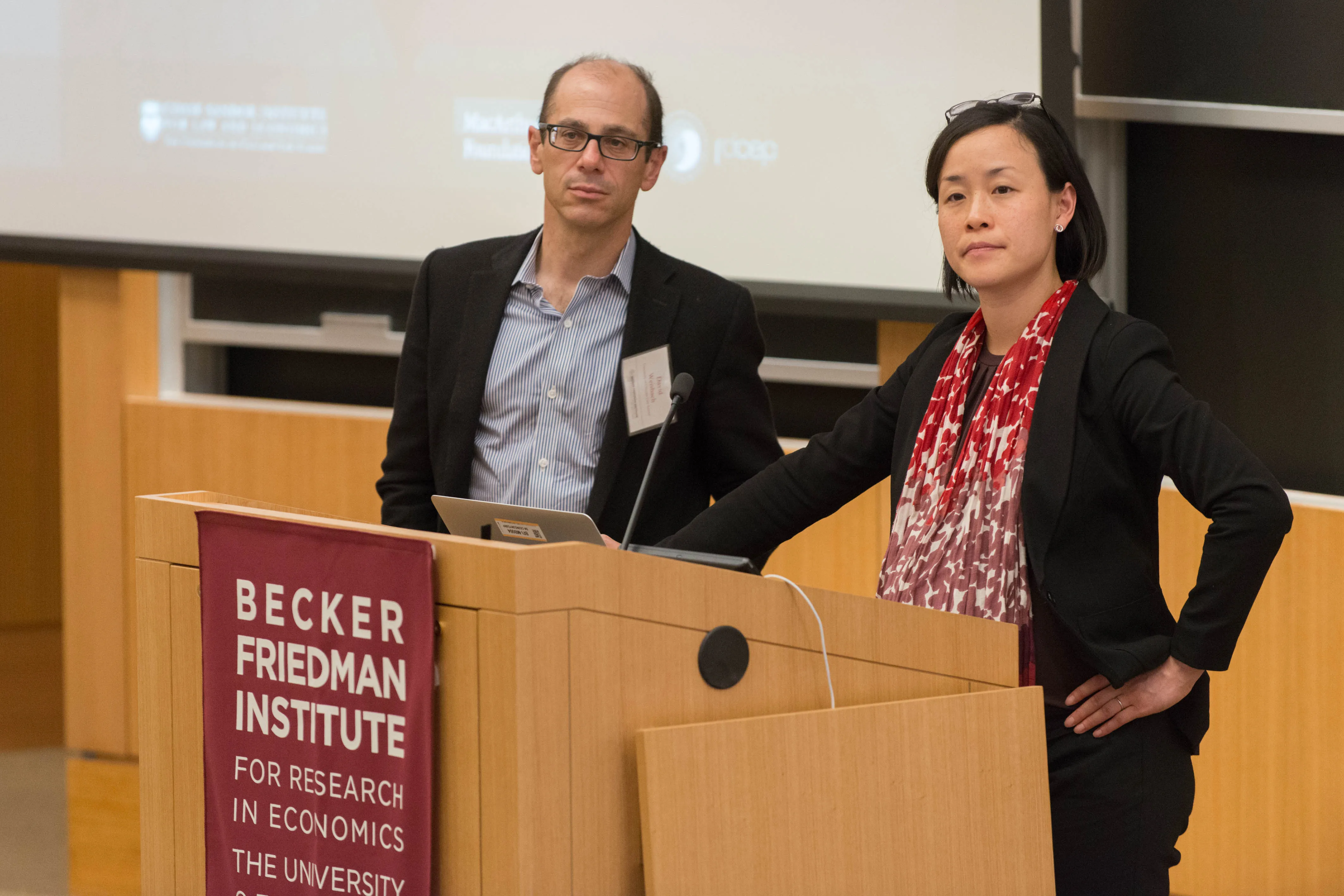Regulation Under Deep Uncertainty

Each year, the Federal Register publishes 2,500 to 4,000 final rules. Those making and enforcing these regulations face uncertainty at many points.
They struggle to precisely estimate the costs and benefits of the rules, especially when the underlying science is in question. They consider how the regulated may respond and try to predict and prevent unintended consequences. They strive for clarity when implementing laws emerging from protracted Congressional battles and muddy compromises.
Academics, regulators, former regulators, and a federal judge gathered to discuss the many confounding aspects of the whole regulatory process at the Becker Friedman Institute’s Federal Agency Decision Making Under Deep Uncertainty conference.
One primary issue explored is the difficulty of conducting cost-benefit analyses to determine the viability and value of a new regulation. Generally agencies can accurately quantify costs, but arguments persist about the best way to project long-term costs. Benefits, however, are very difficult to quantify in ways that allow useful comparisons, presenters pointed out. For instance, how can we put a precise dollar value on how lower mercury counts in the air affect people’s health?
Still, as Law School Professors Eric Posner and Jonathan Masur pointed out, writing down a number and publicizing it is essential because it allows other people to give thoughts and opinions on what goes into the analysis. “We should also have agencies revisit their guesses and do studies with the benefit of hindsight, update their guesses with new information,” Posner said.
How a cost-benefit study is performed can be tricky; who conducts it may also matter, said conference organizer Jennifer Nou, Neubauer Family Assistant Professor of Law. When an agency head chooses to use an outside firm, those performing the analysis are expected to have greater expertise than staff within the agency and are seen as less likely to be influenced by leadership and politics at the agency.
The tradeoff for expertise and independence is that agency heads will have less control of outcomes, with less agency-specific knowledge built into the process. “But we still have to consider, when thinking about independence, to what extent should uncertainty analyses always be subject to review by the highest-level political appointee?” asked Nou.
Judicial review made up a significant portion of the conference’s discussion. “Courts are in deep uncertainty, with respect to a lot of regulation. Judges can’t determine cost effectiveness; they can’t do the kind of investigations that an agency can,” noted Adrian Vermeule of Harvard Law School.
Therefore, regulators are looking for new ways to avoid having their regulations overturned. One interesting approach is administrative severability, which allows courts to roll back problematic portions of a regulation but leave the rest in place.
For example, the Environmental Protection Agency recently proposed the Clean Power Plan, which has four elements regarding energy. The plan was written to include a severability clause that allows the courts to determine that if one, two or three parts of the regulation are deemed unlawful, the remainder of the plan can still progress.
Congressional oversight of agencies was another issue, which Donald Marron from the Urban Institute explored. Should the agencies be required to meet a certain binding numerical restriction, such as in the case of discretionary spending, which would compel the agency to make budgetary tradeoffs? Or should Congress take a more unbounded approach, allowing agencies to make decisions subject-by-subject, such as with entitlement spending?
The key, therefore, is for Congress to decide if the agency agrees with its views and policy objectives, or not. If all elements are in agreement, more freedom can be given to the agency. On the other hand, if viewpoints are different, more boundaries will help meet expectations.
An overarching theme that surfaced in many big ideas presented was that learning is important. While it can be cost prohibitive, or even impossible, to constantly rewrite regulation, it’s essential to review the costs and effectiveness of rules as they are enforced to gather data that will improve future regulation.
But several presenters also emphasized that in contrast to many other countries, the US puts an enormous emphasis on getting regulation right the first time. Even when we don’t, we are developing new and better methods to assess regulation and get new rules right.


